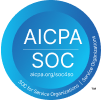Stress isn’t just seeping into the workplace—it’s flooding in. From political tension to financial strain, employees today are navigating more pressure than ever. And while organizations talk more openly about mental health, many workers still feel unsupported, unheard, and overwhelmed.
According to the American Psychological Association’s 2024 Stress in America survey, more than seven in ten U.S. adults say the future of the nation is a significant source of stress, with rising concern over the economy, politics, and healthcare. This growing emotional strain is spilling into professional environments—making mental health not just a personal issue, but a systemic one.
Sogolytics’ latest report, Mental Health in the Age of Constant Crisis, examines how employees across healthcare, education, and corporate or labor-intensive sectors are coping with sustained emotional strain—and what they say institutions must do to help.
The study, based on a nationally representative sample of full-time and part-time employees, reveals widespread emotional fatigue and significant gaps in institutional response. While many organizations offer support, usage remains low and trust is fragile. The findings point to a growing divide between surface-level awareness and real impact.
<< Download the full report on decline in institutions trust>>
Here are five key takeaways from the report:
- 57% of employees feel emotionally exhausted multiple times per week, with 1 in 5 reporting exhaustion daily.
- Only 31% believe their leadership genuinely cares about employee mental health, while another 39% say leaders care only somewhat. Still, 29% say their leaders either don’t care or aren’t sure.
- Nearly half of employees have never used available mental health resources—and don’t plan to.
- Lack of time (31%) and lack of awareness (26%) are the top reasons employees skip available support, with concerns about confidentiality and cost not far behind.
- Among those who saw their mental health decline significantly last year, 47% expect things to get worse in the coming months—underscoring the need for proactive, not reactive, support.
The report doesn’t just highlight problems—it offers a path forward. With tailored recommendations for each sector, the findings emphasize the importance of visible leadership, accessible care, structured recovery time, and stigma-free communication.
In healthcare settings, staff call for trauma-informed leadership and built-in recovery time. In education, teachers seek flexible mental health days and support that includes—not excludes—adults. Corporate and labor-intensive employees want supervisors trained to recognize burnout and systems that offer real protection, not performative perks.
Above all, the report makes one thing clear: Burnout is no longer rare. Institutions that fail to act risk not only the well-being of their people but also the sustainability of their organizations.














